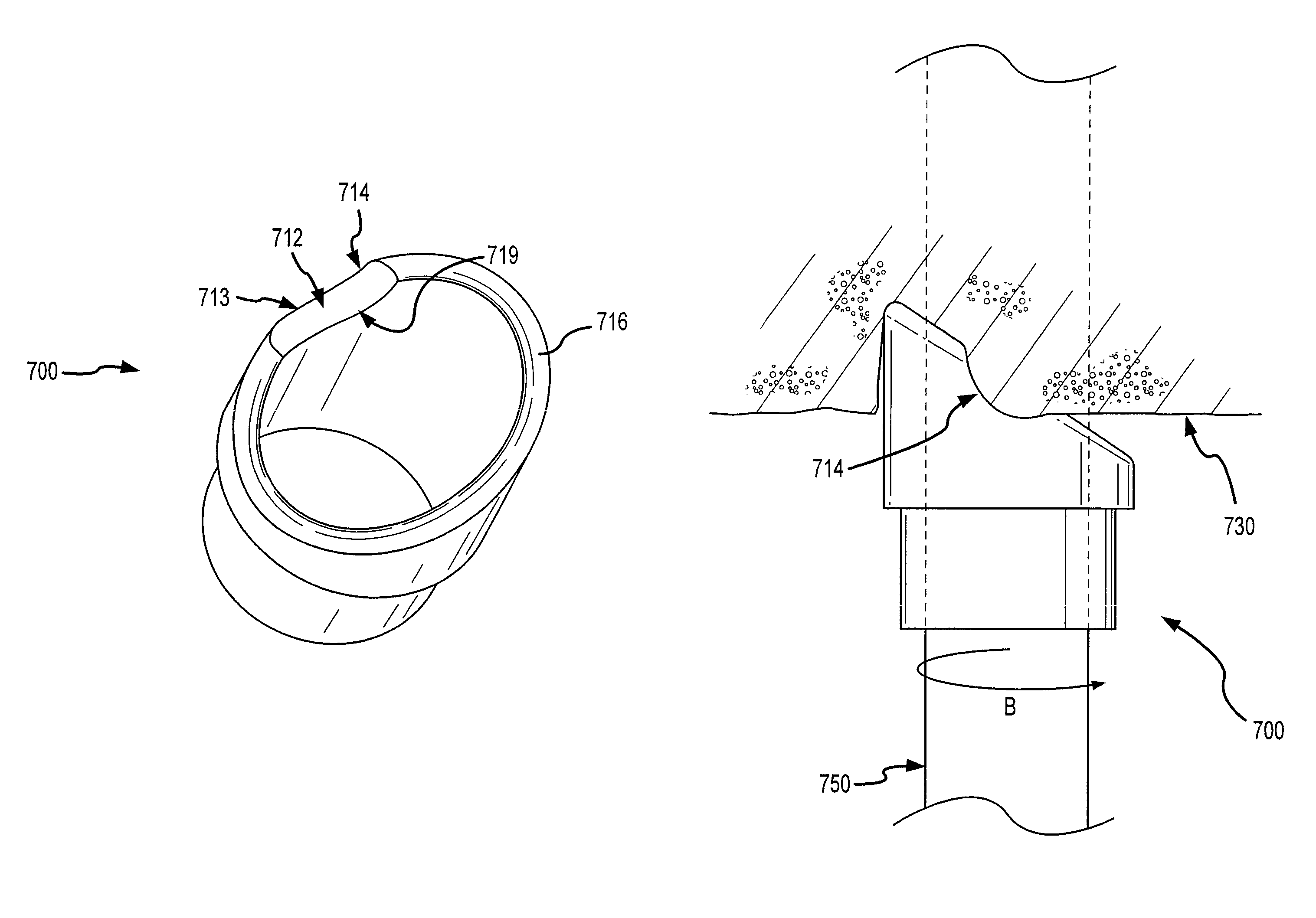Tissue separating systems and methods
a tissue and lead technology, applied in the field of tissue separation systems and methods, can solve the problems of scar tissue or adhesion development, metal sheaths that are currently used to strip scar tissue from implanted leads often cannot traverse the tortuous lead path, and achieve the effects of improving separation surfaces, enhancing contact, and lightly forcing
- Summary
- Abstract
- Description
- Claims
- Application Information
AI Technical Summary
Benefits of technology
Problems solved by technology
Method used
Image
Examples
Embodiment Construction
[0033]Embodiments of the present invention provide a mechanical sheath and cutting tip that can be safely deployed within the vascular system of a patient. Such systems includes a flexible and torqueable sheath and a hard separating mechanism. A separating system can include, for example, a flexible sheath coupled with a tip, which may include a separating surface or shape. The cutting or separating surface or shape can be contacted with patient tissue, and the sheath can be rotated to effect cutting or separating of the tissue. Although the sheath may be flexible, it can also be pushable in the sense that a force applied to the proximal end of the sheath is in large part transferred to the distal end of the sheath. The sheath may also exhibit a high resistance to kinking or crushing. For example, it is possible to force the sheath into a severe bend or tortuous path without causing permanent deformation or damage to the sheath. Moreover, the sheath maintains a desired amount of tor...
PUM
 Login to View More
Login to View More Abstract
Description
Claims
Application Information
 Login to View More
Login to View More - R&D
- Intellectual Property
- Life Sciences
- Materials
- Tech Scout
- Unparalleled Data Quality
- Higher Quality Content
- 60% Fewer Hallucinations
Browse by: Latest US Patents, China's latest patents, Technical Efficacy Thesaurus, Application Domain, Technology Topic, Popular Technical Reports.
© 2025 PatSnap. All rights reserved.Legal|Privacy policy|Modern Slavery Act Transparency Statement|Sitemap|About US| Contact US: help@patsnap.com



